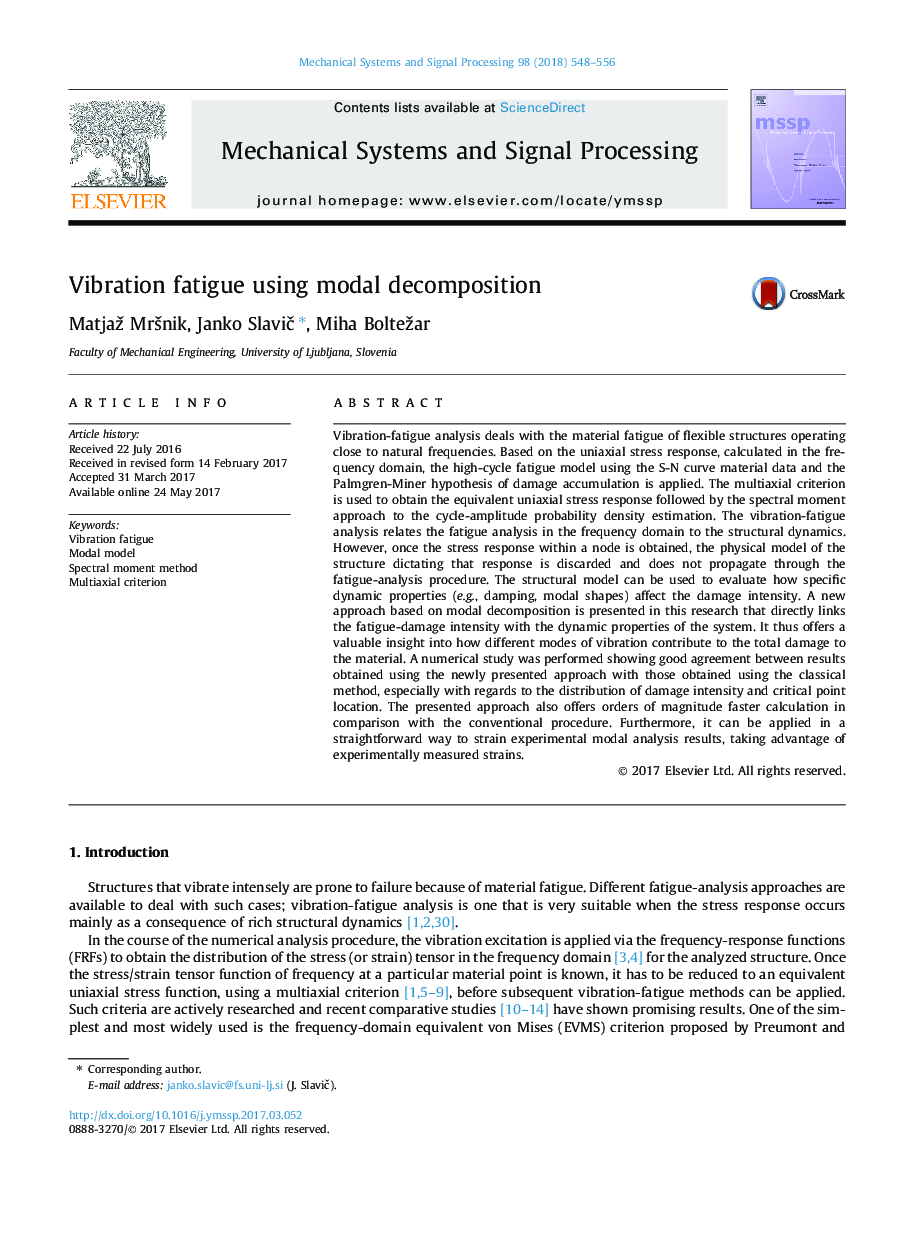| کد مقاله | کد نشریه | سال انتشار | مقاله انگلیسی | نسخه تمام متن |
|---|---|---|---|---|
| 4976884 | 1451837 | 2018 | 9 صفحه PDF | دانلود رایگان |
- Modal decomposition is used to directly relate dynamic properties to damage intensity.
- Contribution of participating modal shapes to the damage intensity can be evaluated.
- Good agreement with the classic approach regarding damage intensity distribution.
- The proposed approach is orders of magnitude faster than the classic approach.
Vibration-fatigue analysis deals with the material fatigue of flexible structures operating close to natural frequencies. Based on the uniaxial stress response, calculated in the frequency domain, the high-cycle fatigue model using the S-N curve material data and the Palmgren-Miner hypothesis of damage accumulation is applied. The multiaxial criterion is used to obtain the equivalent uniaxial stress response followed by the spectral moment approach to the cycle-amplitude probability density estimation. The vibration-fatigue analysis relates the fatigue analysis in the frequency domain to the structural dynamics. However, once the stress response within a node is obtained, the physical model of the structure dictating that response is discarded and does not propagate through the fatigue-analysis procedure. The structural model can be used to evaluate how specific dynamic properties (e.g., damping, modal shapes) affect the damage intensity. A new approach based on modal decomposition is presented in this research that directly links the fatigue-damage intensity with the dynamic properties of the system. It thus offers a valuable insight into how different modes of vibration contribute to the total damage to the material. A numerical study was performed showing good agreement between results obtained using the newly presented approach with those obtained using the classical method, especially with regards to the distribution of damage intensity and critical point location. The presented approach also offers orders of magnitude faster calculation in comparison with the conventional procedure. Furthermore, it can be applied in a straightforward way to strain experimental modal analysis results, taking advantage of experimentally measured strains.
251
Journal: Mechanical Systems and Signal Processing - Volume 98, 1 January 2018, Pages 548-556
